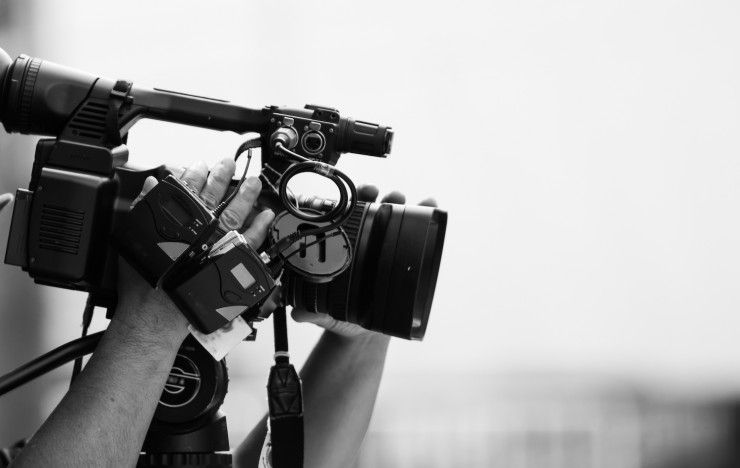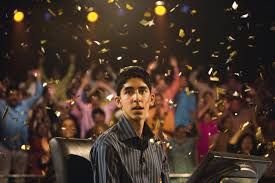Slumdog Millionaire Film Review
Jan 15, 2019 • 115 views
"If Charles Dickens was writing in 21st century India,Slumdog Millionairecould easily have been one of his stories. It carries all the trademarks of the literary master: Urban squalor, wayward children, evil adults, chaste love, serious serendipity."- pluggedin
A blend of drama, betrayal, struggle, heroism and love; all in all make for a riveting cinematic experience that is Slumdog Millionaire. Based in modern India, it aims to throw light on many hard-hitting truths by following the life of Jamal Malik, a good hearted Mumbai teenager of humble beginnings. This essay attempts to unravel some of the cleverly woven themes of the film.
In my point of view, every aspect of the film deserves credit- be it the cinematography, direction or the goose bump evoking background score of A.R Rehman. Rural India provides a vivid backdrop and thus rates highly on its visual appeal. One interesting thing to note is how the story is told in parts, via a series of flashbacks of the protagonist, and gives room for the reader to connect the dots.

CLASS DIFFERENCE IN TERMS OF SOCIO ECONOMIC STATUS-
Jamal, who is a simple ‘chaiwalla’,is interrogated by the Mumbai police on suspicion of cheating on the Indian show, “Who wants to be a millionare?”He is tortured, even given electric shocks, because they refuse to accept that he can have collected this much of knowledge while growing up on the streets of Mumbai. This is reflective of how we all feed into the common misconception that only the elite possess ultimate wisdom and knowledge. In another part of the film, a riot between the Hindus and Muslims erupts, causing Jamal and Salim to lose their mother drastically in a very short span of time. This films successfully highlights how it is always the side-lined, underprivileged community that faces the worst brunt in any challenging circumstance. The film also presents another stereotype of how poverty leads to corruption of character, as seen in the case of Salim, however that is not the case for Jamal.
LUCK AND KNOWLEDGE

A title card is presented: "Jamal Malik is one question away from winning 20 million rupees. How did he do it? A) He cheated, B) He's lucky, C) He's a genius, D) It is written."
While it may seem a bit far-fetched at first, I find it plausible enough that Jamal knew all the answers to the questions because of his tumultuous life experiences. Or as they say; ‘Experience is a hard teacher because she gives the test first, the lesson afterward.’In the last question, he ventures a guess for the answer, playing like he nothing to lose, and oddly enough, it turns out to be the right answer. It almost felt like justice being delivered, that all that pain and struggle he had underwent throughout his life had finally culminated into this well-deserved ending.
LIFESTYLE OF THE SLUM DWELLERS-The film paints a vivid portrayal of slum life in Mumbai. It focusses on corruption of character, human trafficking, brutal treatment of children, and pathetic living conditions. Salim and Jamal, who are orphaned at a young age, have to make ends meet by whatever means they can, even consorting to robbery at times. Maman, a villain is shown to make a living about turning street children into beggars by inhumanly blinding them, so they fetch more prices, and are left incapable to do much else.“Latika, come. Have you any idea how much this little virgin is worth?” This line aptly delivers the kind of mentality that is still concretely present in the nation. Women are viewed as objects, to be merely used and thrown away, and the villains in the film make good money out of this patriarchal mind-set

CINEMATOGRAPHY-“A whole new world of images opens up. A new reality emerges. In the hands of the creative filmmaker, this new system may prove as important and breath-taking as previous innovations.” (Dunn, Linwood, Journal of University Film Association, Illinois)
Cinematography is an important part of any good film, and in Slumdog, Anthony Dod Mantle does a terrific job of presenting the shocking reality to the viewers. There are many shots with distorted close ups (the riots, for example), which cause disorientation to the viewer, allowing them to step into the protagonist’s shoes, and feel how they feel. The buzzing railway station, the policeman splashing Jamal’s head into water, the mother getting knocked into unconsciousness are all impactful shots taken at precise angles so that they remain with the viewer long after the film ends.
HOPEThis one syllable word is something which we search for in almost every film that we see, since films attempt to hold a mirror to the reality. It is the driving force in bringing a paradigm change in the protagonist’s life, and is a common element which is silently incorporated beneath the surface of the film. Jamal’s hope to be united with Latika, the love of his life, is what leads him to try his hand at the game, which ultimately results in him winning the game, creating history, and yes, reuniting with Latika. Hope is what makes for a good ending of any film, and it is what truly keeps us going. Another great film, ‘The Pursuit of Happyness’ also portrays the struggle of Chris Gardner who toils in the hope of building a better life for himself and his son, despite the challenging circumstance. He too, succeeds eventually, reaffirming the viewer’s faith in the spirit of hope and perseverance.

It is a fine film offering an emotional roller coaster ride, and the one thing that it promises for sure, is that it does not disappoint.
